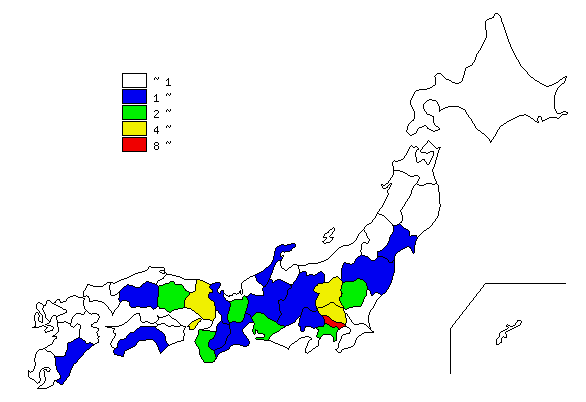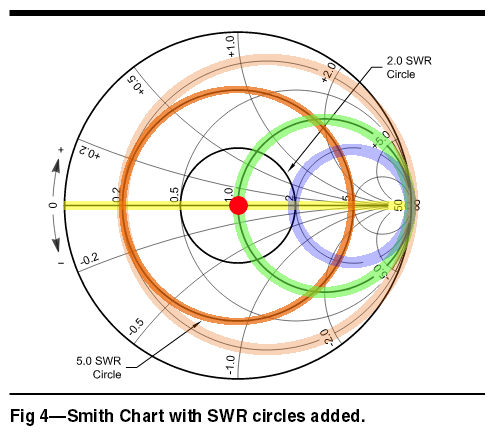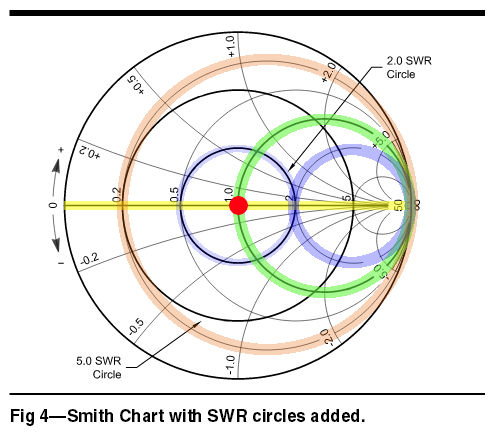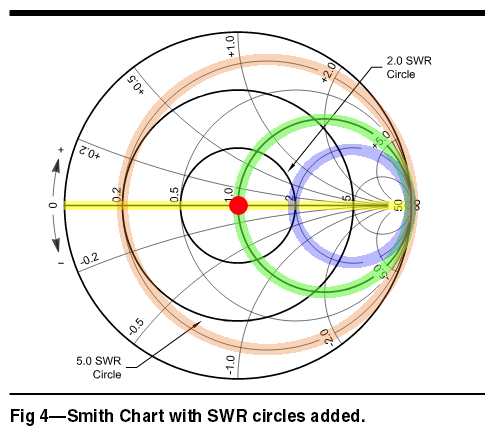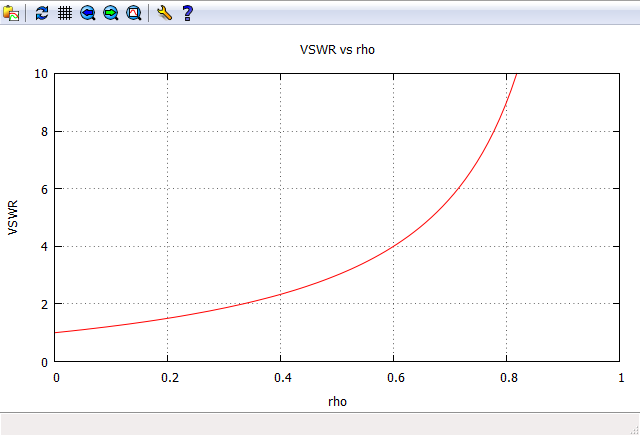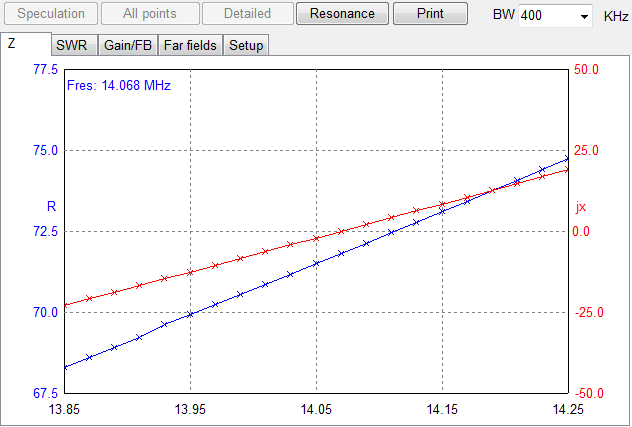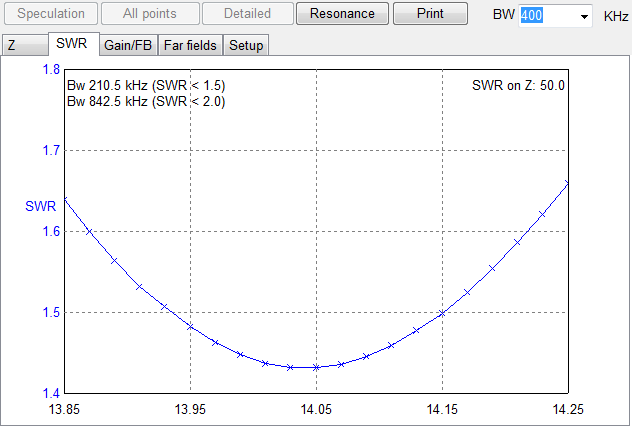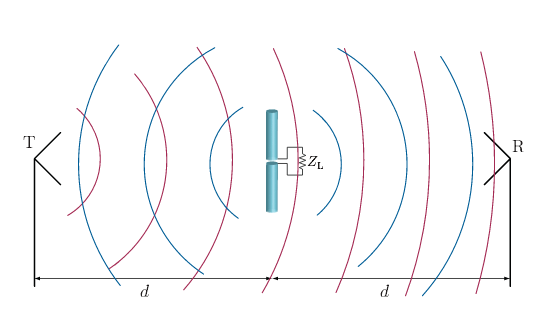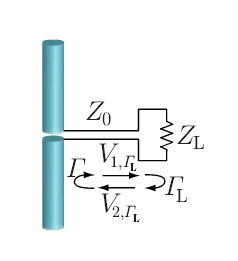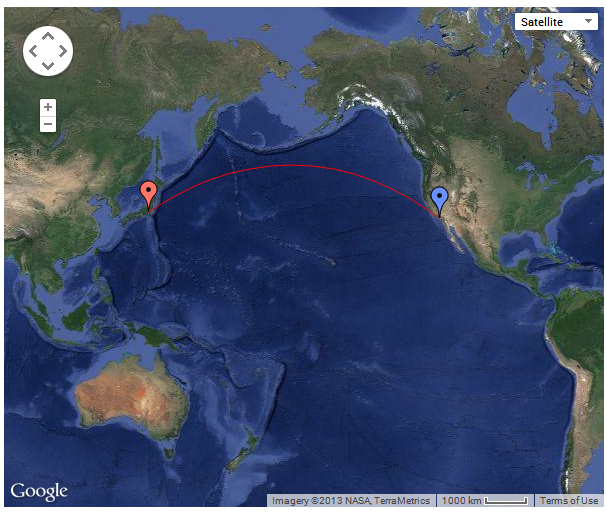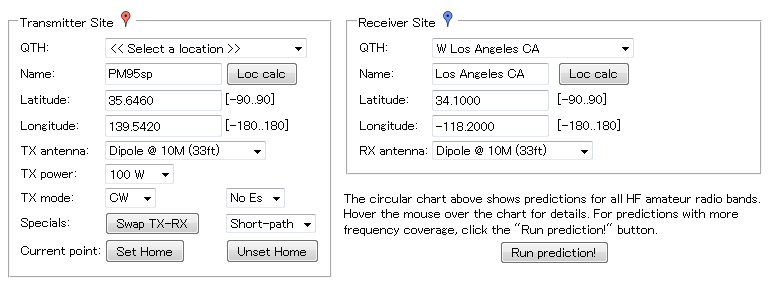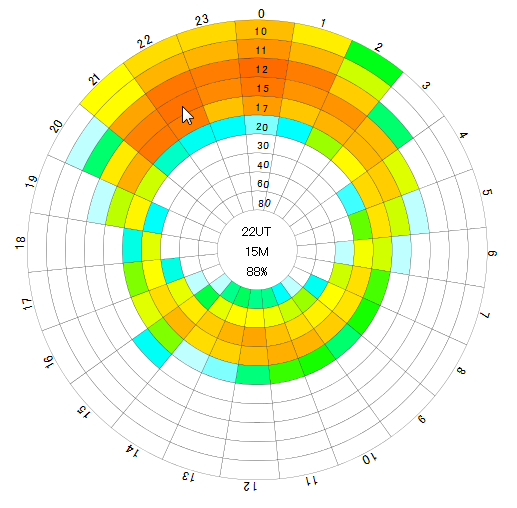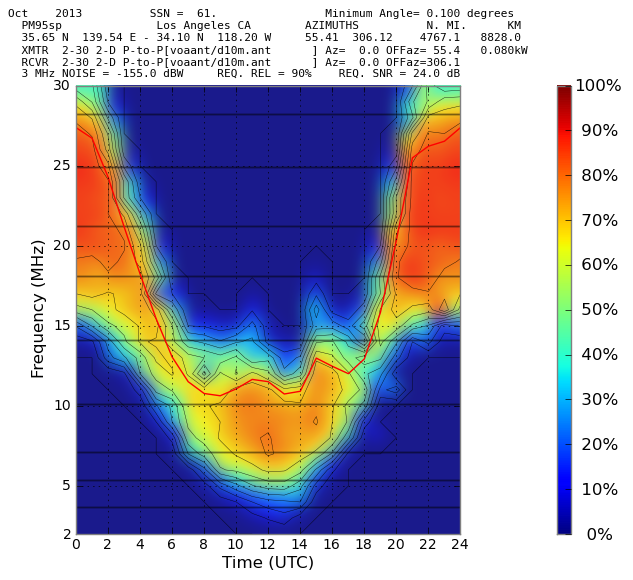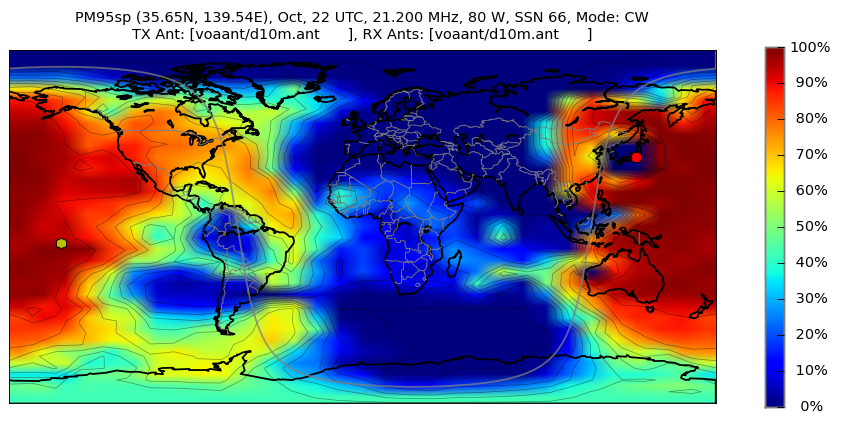I usually do not send CQ myself. This is to check how far my signal is going.
Forty five JA stations now
If R is less than 50 ohm
Now, let’s think of a case, for example, in which Z=10+jX.
This time Z can be anywhere on the r=0.2 circle (outer brown circle) and you can see from the figure that Z is again most close to the origin (red dot) when X=0.
See that the two brown circles (outer and inner ones) are mutually tangent to each other, the point of the contact being at X=0.
If R is not 50 ohm
In general, the feed point impedance of an antenna is Z=R+jX, where R could be either greater than or less than 50 ohm.
First, let’s think of a case, for example, in which Z=100+jX. Now Z can be anywhere on the r=2 circle (blue on the right) and it is obvious that Z is most close to the origin (red dot) when X=0.
This can also be confirmed by looking at the two blue circles which are mutually tangent to each other, the point of the contact being at X=0.
The same can be said for any R > 50, which you can see immediately from the figure if you imagine two such blue circles.
VSWR is minimum if in resonance?
(picture from [1], but the color added by the author.)
So we would like to know if an antenna in resonance gives the minimum VSWR, under the assumption that only the imaginary part of the feed point impedance varies when when we change the element length.
Let’s assume for the moment that the system impedance Z0 is 50 ohm, and if we further assume that the feed point impedance is given by "Z=50+j*X", then Z is always on the r=1 circle (green), and in this case obviously Z is most close to the origin (red dot) when X=0.
Actually in this particular case, Z becomes exactly 50 ohm when X=0, and coincides with Z0, thus the complex reflection coefficient gamma is 0, which means rho is also 0 and VSWR=1.
Resonant Antennas (2)
You said "Z=73.13+j*42.55+j*We*k*delta", but, actually the real part of Z (=73.13) is also a function of delta, right?
Yes, it’s an approximation considering that the change of the real part is relatively small compared with that of the imaginary part.
O.K. We assume that. And under that assumption, can you say that we get the best (=minimum) VSWR value if the antenna is in resonance?
That is a good question, which I can answer using a Smith Chart, but before doing that, you must remember that VSWR=(1+rho)/(1-rho), where rho is the absolute value of the reflection coefficient, gamma. And that it is a monotonically increasing function of rho, which means VSWR becomes minimum when rho is minimum.
Resonant Antennas
An antenna is said to be resonant if its input impedance (or feed point impedance), Z=R+jX, is purely resistive, which means its reactance X is exactly zero.
The input impedance of a half-wave dipole is approximated by the equation:
Z=73.13+j*42.55+j*We*k*delta,
where We and k are some constants, and delta is the excess length of an antenna over half the wavelength. Since both We and k are positive, we can make X to be zero by shortening the element slightly, usually a few percent depending on the diameter of the element.
The question here is what is the physical and practical meaning of the antenna being in resonant.
References:
[1] “Antenna and Radio propagation (in Japanese)” by Yasuto Mushiake,
[2] MMANA-GAL basic.
Scattering from a receiving antenna
The above two figures are from
Mats Gustafsson et al., Forward scattering of loaded and unloaded antennas.
A receiving antenna interacts with an incoming electromagnetic wave. However, its interaction is not limited to absorption of the energy but includes some scattering from the antenna.
As is described in “Antenna and Radio propagation (in Japanese)” written by Yasuto Mushiake, pp 39-42, the scattering cross section of an (receiving) antenna loaded with Zl is given by
As= (R^2/abs(Z+Zl)^2)*4Ae,
where Z=R+jX is the input impedance and Ae is the effective area of the antenna.
The scattering cross section As is a function of Zl, and obviously As(max)=4Ae when Zl=0. And if Zl is selected to be Zconj=R-jX, then As=Ae, which means the antenna emits the same amount of power as it supplies to the receiver.
For the full continuation of this topic
I happened to see some sample pages (124 pages available out of 2,680 pages) of a book (Kindle Price: $116.15, if you buy one.), and found lots of phrases like “for the full continuation of this topic, please visit the web site at …”
This could be a nice idea to keep the book current even after its publication, but some people do not like this style, I presume.
The style can be applicable to our QSOs, for example, we can say “MY ANT IS DIPOLE ES VISIT WWW.something.COM FER THE FULL CONTINUATION OF THE TOPIC …”
But, we are actually so advanced that even this mentioning is unnecessary. We often check QRZ.COM before starting a QSO to see what kind of a person is at the far end of the link.
VOACAP
Let’s see if I have any chances to have a QSO with W6 stations using VOACAP Online Prediction Services, http://www.voacap.com/.
TX in Tokyo, and RX in LA, both 10m high dipole and TX power 100 W.
It seems that I should QRV on 15m band between 21 and 02 UTC.
I may also have some chances on 40m band around 12 UTC.
Or perhaps some stations in Hawaii, but first I need to set up an anntenna for 15m band.

